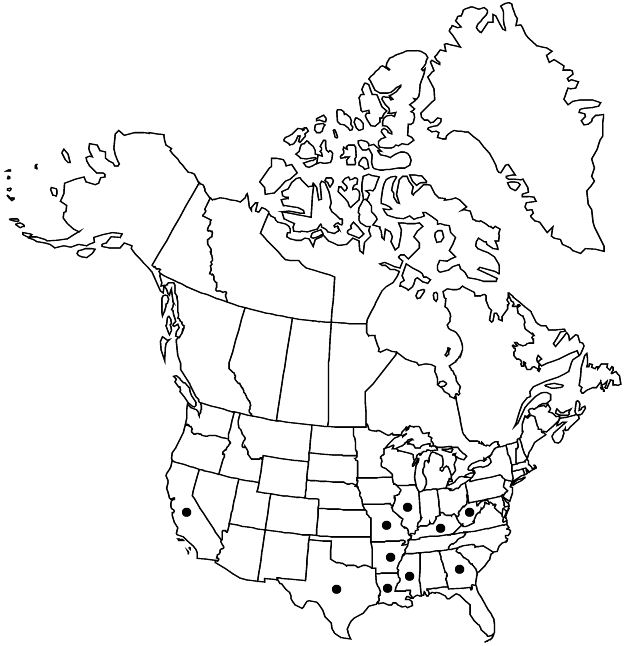Difference between revisions of "Cucurbita melopepo var. melopepo"
FNA>Volume Importer |
FNA>Volume Importer |
||
| Line 42: | Line 42: | ||
|elevation=100–200 m | |elevation=100–200 m | ||
|distribution=Ark.;Calif.;Ga.;Ill.;Ky.;La.;Miss.;Mo.;Tex.;W.Va.;introduced and cultivated nearly worldwide. | |distribution=Ark.;Calif.;Ga.;Ill.;Ky.;La.;Miss.;Mo.;Tex.;W.Va.;introduced and cultivated nearly worldwide. | ||
| − | |discussion=<p>All forms of <i></i>var.<i> melopepo</i> are domesticated; these include most ornamental gourds (for example, Flat-striped, Striped Pear, Bicolor Spoon, Miniature Ball, Mandan, Orange Warted, Warty Hardhead) and the acorn, crookneck, straightneck, scallop, pattypan, summer, and spaghetti squashes. They are hypothesized to be derivatives of <i></i>var.<i> ozarkana</i> (D. S. Decker et al. 1993, 2002b), as <i></i>var.<i> texana</i> has an isozyme pattern distinct from the others (Decker et al. 1993). Wild forms of <i></i>subsp.<i> melopepo</i> once may have been distributed as far as Florida (L. A. Newsom et al. 1993).</p><!-- | + | |discussion=<p>All forms of <i></i></i>var.<i><i> melopepo</i> are domesticated; these include most ornamental gourds (for example, Flat-striped, Striped Pear, Bicolor Spoon, Miniature Ball, Mandan, Orange Warted, Warty Hardhead) and the acorn, crookneck, straightneck, scallop, pattypan, summer, and spaghetti squashes. They are hypothesized to be derivatives of <i></i></i>var.<i><i> ozarkana</i> (D. S. Decker et al. 1993, 2002b), as <i></i></i>var.<i><i> texana</i> has an isozyme pattern distinct from the others (Decker et al. 1993). Wild forms of <i></i></i>subsp.<i><i> melopepo</i> once may have been distributed as far as Florida (L. A. Newsom et al. 1993).</p><!-- |
| − | --><p>Some weedy-habitat populations of <i>Cucurbita melopepo</i> in Illinois and Kentucky may have evolved purely as cultivar escapes; these may also have experienced subsequent introgression with other, nearby, cultivated, weedy, or wild populations of <i></i>var.<i> ozarkana</i> (D. S. Decker et al. 2002b and references therein).</p> | + | --><p>Some weedy-habitat populations of <i>Cucurbita melopepo</i> in Illinois and Kentucky may have evolved purely as cultivar escapes; these may also have experienced subsequent introgression with other, nearby, cultivated, weedy, or wild populations of <i></i></i>var.<i><i> ozarkana</i> (D. S. Decker et al. 2002b and references therein).</p> |
|tables= | |tables= | ||
|references= | |references= | ||
| Line 67: | Line 67: | ||
|publication year= | |publication year= | ||
|special status=Endemic | |special status=Endemic | ||
| − | |source xml=https://jpend@bitbucket.org/aafc-mbb/fna-data-curation.git/src/ | + | |source xml=https://jpend@bitbucket.org/aafc-mbb/fna-data-curation.git/src/f6b125a955440c0872999024f038d74684f65921/coarse_grained_fna_xml/V6/V6_88.xml |
|genus=Cucurbita | |genus=Cucurbita | ||
|species=Cucurbita melopepo | |species=Cucurbita melopepo | ||
Revision as of 21:17, 24 September 2019
Plants domesticated, sometimes escaping. Pepos solid or striped, multiple colors, including yellow and orange, rind smooth, ribbed, or warty, flesh not bitter (except for some ornamental gourd cultivars). Seeds: germination within 3–15 days, depending on cultivar.
Phenology: Flowering Jun–Oct.
Habitat: Vacant lots, trash heaps, roadsides, disturbed sites
Elevation: 100–200 m
Distribution

Ark., Calif., Ga., Ill., Ky., La., Miss., Mo., Tex., W.Va., introduced and cultivated nearly worldwide.
Discussion
All forms of var. melopepo are domesticated; these include most ornamental gourds (for example, Flat-striped, Striped Pear, Bicolor Spoon, Miniature Ball, Mandan, Orange Warted, Warty Hardhead) and the acorn, crookneck, straightneck, scallop, pattypan, summer, and spaghetti squashes. They are hypothesized to be derivatives of var. ozarkana (D. S. Decker et al. 1993, 2002b), as var. texana has an isozyme pattern distinct from the others (Decker et al. 1993). Wild forms of subsp. melopepo once may have been distributed as far as Florida (L. A. Newsom et al. 1993).
Some weedy-habitat populations of Cucurbita melopepo in Illinois and Kentucky may have evolved purely as cultivar escapes; these may also have experienced subsequent introgression with other, nearby, cultivated, weedy, or wild populations of var. ozarkana (D. S. Decker et al. 2002b and references therein).
Selected References
None.